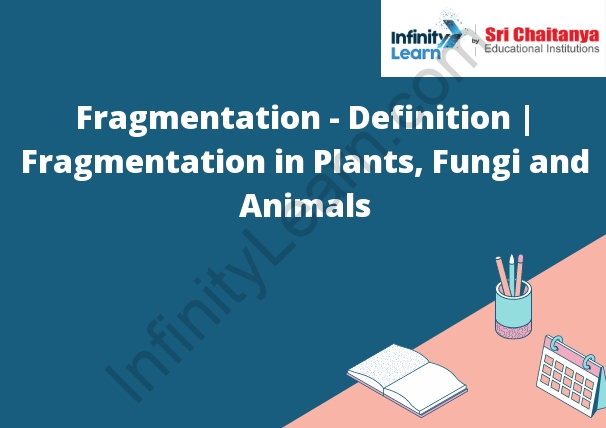Table of Contents
Fragmentation in Plants and Animals.
Fragmentation – Definition: Fragmentation is a common means of reproduction in plants and animals. In plants, fragmentation can result in the formation of new plants. In animals, fragmentation can result in the formation of new individuals.
- In plants and animals, fragmentation is the breaking of a body part off of the main body. This can happen naturally, as in the case of a tree losing a branch in a storm, or it can be done intentionally, as in the case of a person cutting their hair. Fragmentation can also occur as a result of injury or disease.
- In plants, fragmentation occurs when the plant is divided into two or more parts. This can happen when the plant is cut or when it splits apart due to natural causes, such as wind or rain. In animals, fragmentation occurs when the body is divided into two or more parts. This can happen as a result of injury or disease.

Fragmentation in Diverse Organisms
There are many different ways that organisms can fragment. One way is by the use of spores. Spores are reproductive cells that are released from the parent organism and can grow into new organisms. Another way is by the breaking of the body into pieces. This can happen when an organism is attacked by a predator or when it is trying to escape from a predator. The organism will break into small pieces that can then grow into new organisms.
Fragmentation in Plants
Fragmentation is the breaking of a body into smaller pieces. This can happen due to natural or artificial means. In plants, fragmentation is a form of asexual reproduction. When a plant breaks apart, the individual pieces will form new plants. This is a common way for plants to spread and colonize new areas.
Fragmentation in Animals
In fragmentation, an animal breaks into pieces, each of which can grow into a new individual. This process allows for asexual reproduction, which is a type of reproduction that does not involve the union of gametes. In asexual reproduction, the new individual is genetically identical to the original. This type of reproduction is common in organisms that can not sexually reproduce, such as bacteria.
Coral
polyps are small, soft-bodied invertebrates that can be found in both marine and freshwater environments. They are colonial animals that live in colonies of many identical polyps. Each polyp has a cylindrical body with a mouth on the top and a foot on the bottom. The mouth is used to capture food and the foot is used to attach the polyp to a substrate. Polyps can also reproduce asexually by budding. In asexual reproduction, a small polyp grows out of the body of the parent polyp and becomes a new individual.
Echinoderms
- Echinoderms are a group of invertebrates that have a hard external skeleton. They are related to sea urchins, starfish, and sea cucumbers.
- Echinoderms have a five-fold symmetry, meaning that they can be divided into five identical parts. They have a water-filled body cavity called a coelom, which helps them move around by expanding and contracting.
- Echinoderms have a hard external skeleton that helps them move around and protects them from predators. The skeleton is made of calcium carbonate, and the animals can use it to move by bending their arms and legs.
- Echinoderms are found in both salt water and fresh water. They eat a variety of things, including plankton, algae, and small fish.
List of Disadvantages of this Method of Reproduction
1. One disadvantage of asexual reproduction is that it can lead to a decrease in genetic variation within a population. This is because asexual reproduction results in offspring that are genetically identical to their parents. This can be a problem if the environment changes, because the genetically identical offspring will all be likely to respond in the same way to the change, potentially leading to a decrease in the population’s fitness.
2. Another disadvantage of asexual reproduction is that it can lead to inbreeding. This is because asexual reproduction results in offspring that are genetically identical to their parents. This can increase the likelihood that two individuals will share the same harmful recessive alleles, which can lead to the offspring being born with genetic disorders.
3. A third disadvantage of asexual reproduction is that it can lead to the accumulation of harmful mutations in a population. This is because asexual reproduction does not involve the recombination of genetic information, which can lead to the accumulation of harmful mutations in a population.
4. A fourth disadvantage of asexual reproduction is that it can lead to the loss of genetic diversity. This is because asexual reproduction results in the loss of genetic variation within a population. This can be a problem if the environment changes, because the genetically diverse population will be better able to adapt to the change.









